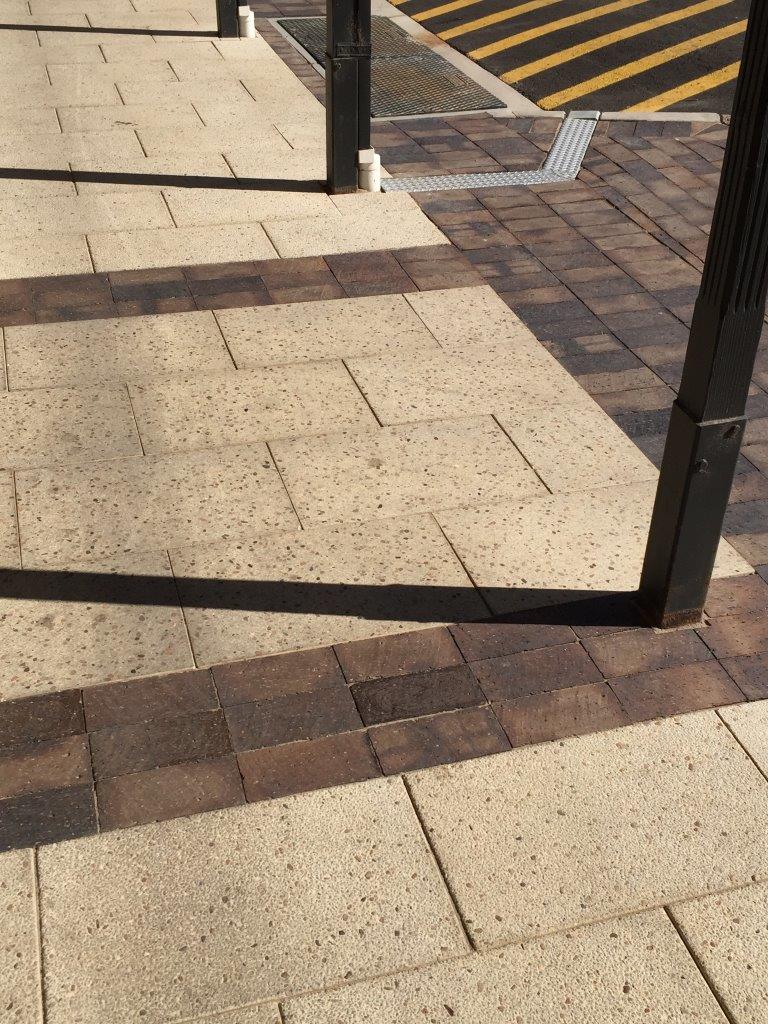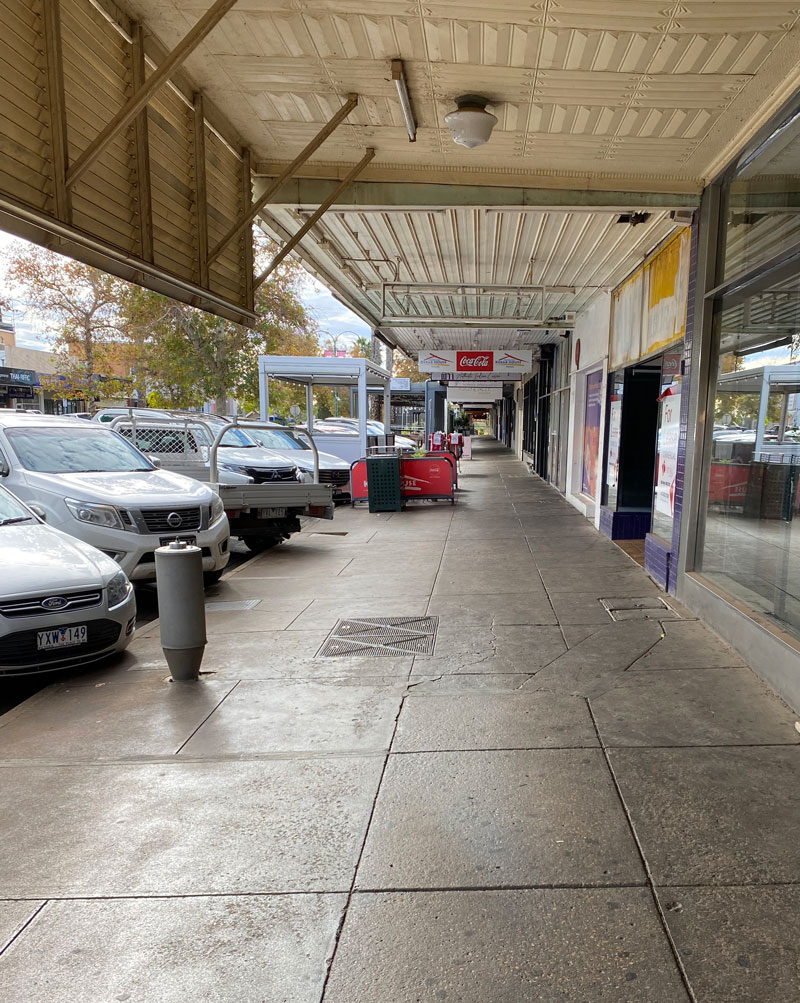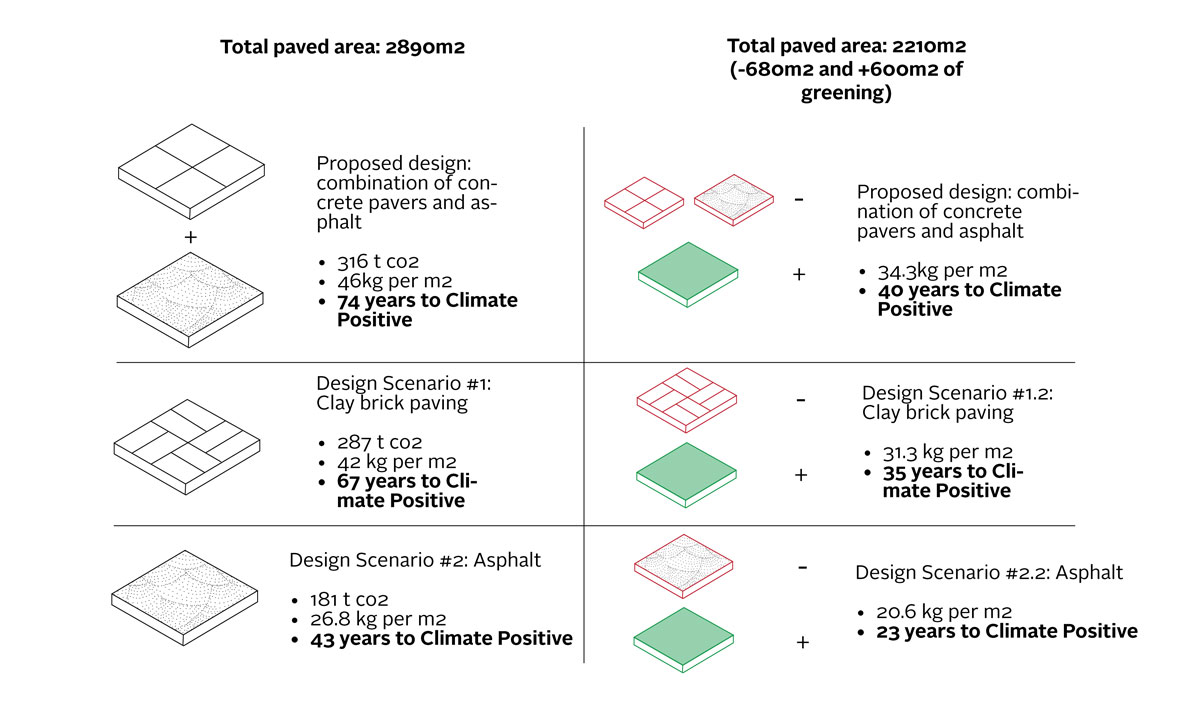Climate Positive Design for carbon responsible projects
Respect is one of five organisational values that the Jensen PLUS team defined together in 2021 — and incorporates respect for our environment and climate.
We do what we can to work sustainably as a team — for example, by purchasing 100% renewable electricity and becoming a carbon neutral certified business in 2020 — and we endeavour to influence our planning, landscape and urban design clients and projects to be mindful of their footprint and be kind to our planet too.
Over the last few months, Director Michael McKeown and Odette Robbins, Student Urban Planner and Designer, have been researching how to plan and build ‘Climate Positive Designs’, and in particular how to incorporate them into our street and public realm designs for clients.

The objective of Climate Positive Design is to sequester more carbon over their lifetime than they will emit. A worthy and aspirational goal — but can we achieve it in our urban and landscape design projects?
Michael says, ‘’We’ve always known that construction materials like concrete and steel emit carbon dioxide when they are created and shaped into footpaths (example pictured) and street furniture. And we know that trees and plants absorb carbon from the atmosphere”.
“But we never really understood the quantum of carbon it takes to make a new or redeveloped streetscape, versus the benefit of a green and leafy streetscape. Until now… and it’s not happy reading,”
Through their research, Michael and Odette have been guided by the Australian Institute of Landscape Architects’ (AILA) Climate Positive Design Guidelines, endorsed emission targets and the Climate Positive Pathfinder App to explore how they can design, plan and build carbon responsible projects.
“The Pathfinder app quantifies emissions associated with three design parameters,” says Odette.
Image: Existing conditions in the streetscape discussed in the case study — How can we avoid wasting the embodied energy in these concrete footpaths?

“Firstly, the embodied carbon associated with material selection and design elements, such as paving and furniture; secondly the operational impacts of a project such as maintenance; and lastly, the predicted offsets of carbon sinks achieved through planting and softscapes.”
Pathfinder produces an instantaneous carbon scorecard that allows designers to test and interrogate design scenarios and comprehend the carbon associated with certain materials.
“Analysis of Pathfinder data has revealed that 75% of a project’s carbon budget is confirmed during the early concept or design phases, highlighting the need to account for carbon early within the design thinking process,” says Michael.
Case study
Several Jensen PLUS projects are currently being tested in the Pathfinder app.
Map 1 (below): Regional streetscape renewal project.

“Analysis of the ‘carbon budget’ of a 230m streetscape renewal project in a regional Australian city has already instigated dynamic conversations on how our design processes can adapt when carbon is positioned at the forefront of our design thinking,” says Michael.
The findings of this particular case study include:
- When using cost-estimates to generate a broad understanding of the projects carbon budget, the proposed design would not achieve climate positivity for 150 years!
- By assigning percentages of the total carbon budget to proposed design elements, such as a new shared road and footpath paving, we were able to identify and test low carbon scenarios whilst simultaneously prioritising the projects design objectives.
- Within Pathfinder we produced several design scenarios that focused on changes to material selection, increasing carbon sinks (greening) and reducing the project scope. Testing one design scenario, additional parking was removed from the project scope. The outcomes of these interventions in some cases reduced the project’s carbon impact by more than half.
Diagram 1 (below): Prioritising carbon. Shared road material scenarios and the impacts of reducing paving and increasing greening on carbon budgets.

Learnings
With these results in mind, we found there is significant opportunity to redefine our approach to design thinking to improve the carbon impact of urban design projects.
We are implementing this in our processes by rethinking the first step.
- What if, rather than erasing the old thing in order to make the new thing, we created opportunities for the old and new to new exist simultaneously at ease with one another?
- What if, instead of demolition, we advocated for subtle interventions and artistic redefinitions?
- What if, we account for carbon within our projects, the same way we account for budget constraints?
The answers to these questions will be fundamental for how we will evolve and structure our approach to Climate Positive Designs.
The Jensen PLUS team is committed to upholding and living our values, and respect for our climate and environment through our own practices and through our work with clients is imperative.
Look out for the next article in our climate positive design series where we explore more practical application of climate design in a new case study, coming soon!

